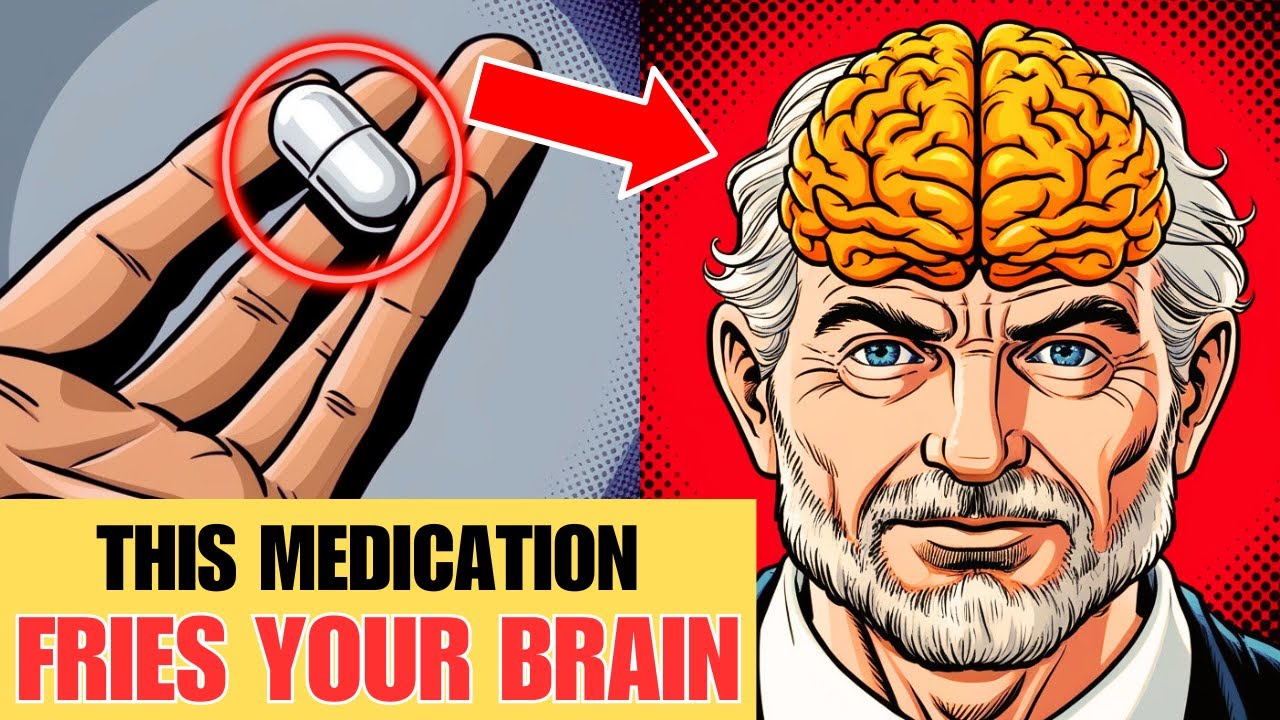Curso de Farmacologia: Aula 13 - Antidepressivos - ADT (Parte III)
Summary
TLDRThis lesson on tricyclic antidepressants (TCAs) explores their mechanism of action, classification, and common side effects. TCAs inhibit the reuptake of serotonin and norepinephrine, improving mood and treating severe depression. The lecture also explains the difference between non-selective and selective TCAs and highlights their potential side effects, such as sedation, weight gain, and orthostatic hypotension. Additionally, TCAs have non-depressive uses, including treatment for anxiety, bulimia, and chronic pain. The lesson concludes by previewing the next topic on monoamine reuptake inhibitors, providing a comprehensive understanding of these medications and their broader applications.
Takeaways
- 😀 Tricyclic antidepressants (TCAs) work by inhibiting the reuptake of serotonin and norepinephrine, increasing their levels in the synaptic cleft.
- 😀 TCAs are primarily used for severe or treatment-resistant depression, although they also have non-depressive uses such as for anxiety, bulimia, and migraines.
- 😀 The structure of TCAs consists of three rings, two of which are aromatic, and one with a nitrogen atom, giving them their name.
- 😀 TCAs can be either non-selective, inhibiting both serotonin and norepinephrine reuptake, or selective, inhibiting only norepinephrine reuptake.
- 😀 Non-selective TCAs include imipramine, amitriptyline, and clomipramine, while selective TCAs, like desipramine and nortriptyline, only affect norepinephrine.
- 😀 Side effects of TCAs are due to their lack of selectivity and include weight gain, sedation, dizziness, and anticholinergic effects like constipation and dry mouth.
- 😀 TCAs can cause hypotension, particularly orthostatic hypotension, due to their antagonism of alpha-1 adrenergic receptors.
- 😀 The most common side effects associated with TCAs are weight gain (amitriptyline, clomipramine), sedation (amitriptyline, doxepin), and anticholinergic effects (imipramine, clomipramine).
- 😀 TCAs also affect sexual function, with clomipramine being particularly known for its sexual side effects.
- 😀 While TCAs are effective for depression, their side effects are more pronounced in non-selective types. Selective TCAs, like nortriptyline, have fewer adverse effects.
- 😀 Amitriptyline is the TCA most commonly used for non-depressive conditions, such as migraine, neuralgia, and enuresis, though it's not included in official product labels for these uses.
Q & A
What is the primary mechanism of action of tricyclic antidepressants (TCAs)?
-Tricyclic antidepressants (TCAs) work by inhibiting the reuptake of serotonin and norepinephrine from the synaptic cleft. This action increases the levels of these neurotransmitters, enhancing their neurotransmission and improving mood in patients with depression.
What types of depression are tricyclic antidepressants (TCAs) primarily used to treat?
-Tricyclic antidepressants are primarily used to treat severe or treatment-resistant depression.
What is the significance of the structure of tricyclic antidepressants?
-Tricyclic antidepressants have a structure characterized by three rings, two aromatic and one containing a nitrogen atom. This structure is what gives the class of drugs its name, as these three rings are essential for their mechanism of action.
How do non-selective tricyclic antidepressants differ from selective ones?
-Non-selective TCAs, such as imipramine, amitriptyline, and clomipramine, inhibit the reuptake of both norepinephrine and serotonin. In contrast, selective TCAs like desipramine and nortriptyline inhibit only the reuptake of norepinephrine.
What are some common side effects of tricyclic antidepressants (TCAs)?
-Common side effects of TCAs include weight gain, sedation (drowsiness), dry mouth, blurred vision, constipation, orthostatic hypotension (dizziness when standing up), and sexual dysfunction.
Why do tricyclic antidepressants (TCAs) cause side effects like sedation and weight gain?
-The side effects of TCAs arise from their lack of selectivity. They affect not only serotonin and norepinephrine reuptake but also other receptor systems, such as histaminergic, adrenergic, and cholinergic receptors, leading to unwanted effects like sedation and weight gain.
What are some of the non-depressive uses of tricyclic antidepressants (TCAs)?
-In addition to treating depression, tricyclic antidepressants, especially amitriptyline, are used to manage conditions such as anxiety, panic attacks, bulimia, narcolepsy, enuresis, migraines, neuralgia, and peptic ulcers.
Which tricyclic antidepressant is particularly used for treating migraines and neuralgia?
-Amitriptyline is commonly used to treat conditions like migraines and neuralgia, in addition to depression.
What is the relationship between the selectivity of tricyclic antidepressants (TCAs) and their side effect profile?
-The less selective a tricyclic antidepressant is, the higher the likelihood of causing side effects, as it interferes with multiple neurotransmitter systems. Non-selective TCAs like amitriptyline and clomipramine tend to cause more side effects compared to selective ones like nortriptyline.
What is the connection between tricyclic antidepressants and orthostatic hypotension?
-Tricyclic antidepressants, particularly those that affect adrenergic receptors (like amitriptyline), can lead to orthostatic hypotension. This is a condition where a person experiences a drop in blood pressure when standing up from a seated or lying position, causing dizziness.
Outlines

This section is available to paid users only. Please upgrade to access this part.
Upgrade NowMindmap

This section is available to paid users only. Please upgrade to access this part.
Upgrade NowKeywords

This section is available to paid users only. Please upgrade to access this part.
Upgrade NowHighlights

This section is available to paid users only. Please upgrade to access this part.
Upgrade NowTranscripts

This section is available to paid users only. Please upgrade to access this part.
Upgrade NowBrowse More Related Video

Pharmacology - ANTIDEPRESSANTS - SSRIs, SNRIs, TCAs, MAOIs, Lithium ( MADE EASY)

Treating depression with antidepressants

ANTIDEPRESSANTS Overview (SSRIs, MAOIs, TCAs) | Nursing Pharmacology | NurseInTheMaking

Video animasi psikofarmaka

WARNING! 8 Medications That Can Cause Severe Dementia (Must Know Risks!)

Everything You Need to Know About Trintellix (Vortioxetine)
5.0 / 5 (0 votes)